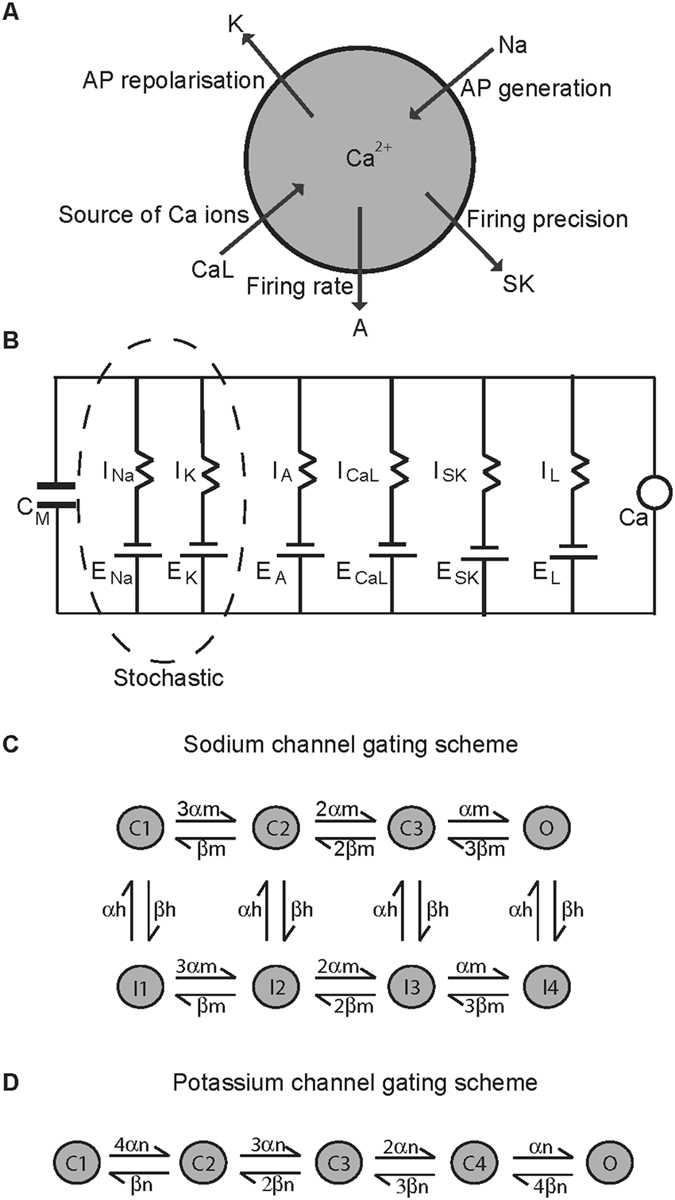Figure 1.

Dopamine neuron model. (A) A single spherical compartment of diameter 10 μm and capacitance 1 μF represents the dopamine neuron soma. It is incorporated with those ionic conductances known to be sufficient to reproduce the basic electrophysiological features associated with these neurons, such as the Na (sodium channel) and K (delayed rectifier potassium channel) that regulate the generation and repolarisation of the action potential respectively; the A (A-type potassium channel) that helps maintain firing frequency; CaL (L-type calcium channel) that provides the bulk of intracellular calcium; SK (calcium-activated potassium channel of the SK type) that maintains firing regularity. (B) The Hodgkin-Huxley style equivalent electrical circuit for the model schematic in (A). The sodium and delayed rectifier potassium channels are modelled as stochastic, keeping all other ion channels deterministic. The neuronal membrane is considered as a capacitor with capacitance CM and with ion channels in parallel to each other. Eion is the electromotive force that represents the reversal potential of the respective ion channel, Iion represents the current flowing through them, and Ca is the intracellular calcium ion concentration. (C,D) Markov gating schemes for sodium and potassium channels respectively. Each sodium channel can exist in one of activated/open, inactivated or closed states while each potassium channel can either be open or closed.
